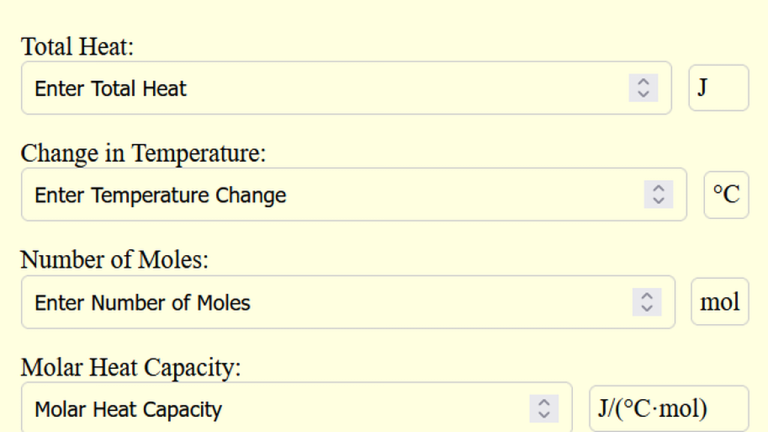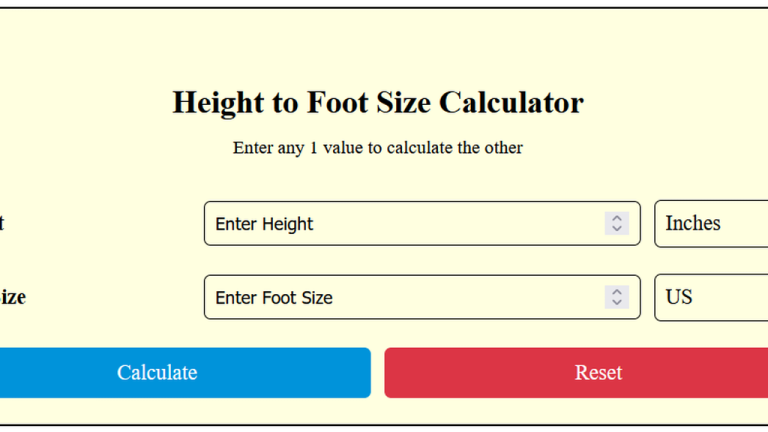Moon Weight Calculator [Weight On The Moon Calculator 2025]
Multiply your Earth weight (EW) by the Moon’s gravity (1.622 m/s²) and divide by Earth’s gravity (9.81 m/s²) to determine your weight on the Moon.
Multiply your Earth weight (EW) by the Moon’s gravity (1.622 m/s²) and divide by Earth’s gravity (9.81 m/s²) to determine your weight on the Moon.
The Moon Weight Calculator helps you calculate how much you would weigh on the Moon. Since the Moon’s gravity is approximately 1/6 of Earth’s, objects and individuals weigh significantly less there. This tool is particularly useful for educational purposes, space exploration simulations, and understanding gravitational differences between celestial bodies.
MW = (EW / 9.81) ∗ 1.622
| Variable | Description | Unit |
|---|---|---|
| MW | Weight on the Moon | Kilograms (kg) |
| EW | Weight on Earth | Kilograms (kg) |
| 9.81 | Gravity on Earth | m/s² |
| 1.622 | Gravity on the Moon | m/s² |
Example 1: Calculating Moon Weight for a 70 kg Person
| Step | Value | Explanation |
|---|---|---|
| Earth Weight (EW) | 70 kg | Weight of the person on Earth |
| Divide EW by 9.81 | Normalize weight by Earth’s gravity | |
| Multiply by 1.622 | Adjust weight for Moon’s gravity | |
| Result | 11.58 kg | Weight of the person on the Moon |
Example 2: Calculating Moon Weight for a 100 kg Person
| Step | Value | Explanation |
|---|---|---|
| Earth Weight (EW) | 100 kg | Weight of the person on Earth |
| Divide EW by 9.81 | Normalize weight by Earth’s gravity | |
| Multiply by 1.622 | Adjust weight for Moon’s gravity | |
| Result | 16.52 kg | Weight of the person on the Moon |
The Moon Weight Calculator is a fascinating tool. This tool helps you discover your weight on the moon by converting your Earth weight using the moon’s gravity, which is approximately one-sixth of Earth’s. This calculator is ideal for astronomy enthusiasts, educators, or anyone curious about how their weight changes in different gravitational conditions.
When you input your Earth weight, the calculator applies the moon’s gravitational constant, delivering precise results instantly. This not only provides insight into the physics of weight and mass but also highlights how gravity varies across celestial bodies. It’s a simple way to engage with concepts of space science and planetary gravity.
Moreover, the tool is particularly useful for learning about gravity’s effects on weight, emphasizing the moon’s reduced gravity. This is a great educational resource for students exploring planetary differences or for anyone planning imaginative lunar scenarios.
In essence, the Moon Weight Calculator offers an engaging way to explore weight variations under different gravitational conditions. Its ease of use and scientific accuracy make it a fun and educational tool for users of all ages, bringing the wonders of space science closer to home.
Enter the values to use our basic and advanced Uneven Rectangular Area Calculator for instant calculation. Uneven Rectangular Area Calculator Side A Length: Side B Length: Diagonal Length: Angle Between Sides A and B (degrees): Calculate Reset Area of Uneven Rectangle: The Uneven Rectangular Area Calculator is a tool designed for calculating the area of…
Divide the processing fee by the total transaction amount and multiply by 100 to determine the effective fee percentage. The Processing Fees Calculator helps determine the effective fee percentage charged during a transaction. Whether you’re calculating credit card fees, online payment processing costs, or other service charges, this tool simplifies fee management. It is particularly…
To convert grams to mass in atomic mass units (AMU), multiply the weight in grams by Avogadro’s number (6.0229552894 × 10²³). The Grams to Mass Calculator simplifies the conversion of a given weight in grams into its equivalent mass in atomic mass units (AMU). This conversion is particularly useful in chemistry and physics when dealing…

Divide the heat energy (Q) by the product of the temperature change (∆T) and the number of moles (n). Molar heat capacity refers to the amount of heat required to raise the temperature of one mole of a substance by one degree Kelvin. It plays a crucial role in understanding thermodynamic processes, especially in chemistry…

To estimate foot size based on height, multiply the height (H) by 0.15. This simple formula provides a quick approximation of foot size in the same unit as the height. The Height To Foot Size Calculator is perfect for predicting foot size based on height. It is useful in various fields such as footwear design,…
To find the date 14 days from today, simply add 14 calendar days to the current date. 14 Days From Today Calculator Today’s Date Date 14 Days From Today Calculate Reset The 14 Days From Today Calculator provides an easy way to determine the exact date 14 days into the future. This tool is particularly…